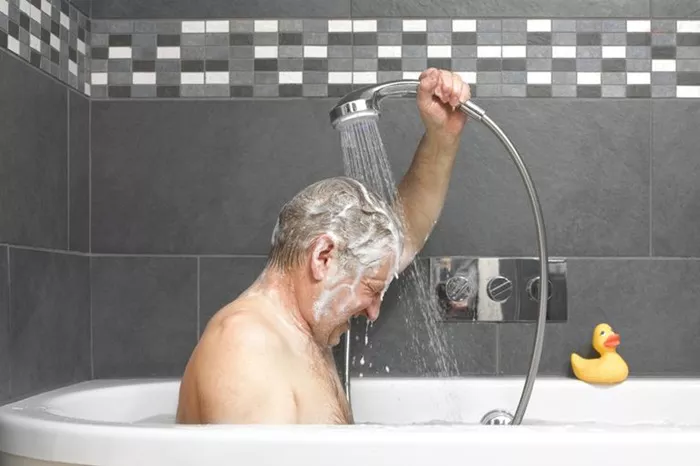Rhinoplasty, commonly referred to as a nose job, is a popular cosmetic surgery that reshapes the nose to enhance facial harmony and functionality. Post-surgery care is essential for optimal results, and patients often wonder about the right time to resume daily activities, especially showering. In this comprehensive guide, we’ll delve into the post-operative timeline and recommendations for showering after rhinoplasty.
Understanding Rhinoplasty
Before discussing showering, it’s important to understand what rhinoplasty involves and how it affects the healing process.
Types of Rhinoplasty Procedures
Rhinoplasty can be categorized into different types based on the patient’s needs:
Open Rhinoplasty: This involves a small incision on the columella, allowing the surgeon to lift the skin and access the nasal structure.
Closed Rhinoplasty: All incisions are made within the nostrils, resulting in no visible scarring.
Revision Rhinoplasty: Performed to correct or enhance the results of a previous rhinoplasty.
Post-Surgery Effects
After rhinoplasty, patients can expect:
Swelling and Bruising: Common in the first few weeks, particularly around the nose and eyes.
Nasal Congestion: Due to swelling and internal splints, patients may experience difficulty breathing.
Sensitivity: The nose will be sensitive, and any pressure can affect the healing process.
Showering Post-Rhinoplasty
Showering is a basic necessity, but post-rhinoplasty, it requires careful consideration to avoid complications.
Initial Precautions
During the initial recovery phase:
Avoid Direct Water Contact: Direct water on the nose should be avoided to prevent irritation or pressure.
Use of Splints and Bandages: External splints or bandages must stay dry to maintain their adhesive properties.
When to Resume Showering
The timeline for showering post-rhinoplasty typically follows these stages:
1. First 48 Hours
Sponge Bath Only: Patients are advised to take sponge baths to avoid getting the nose wet.
Avoid Hot Water: Hot water can increase swelling; opt for lukewarm water instead.
2. 3 to 5 Days Post-Surgery
Partial Shower: Patients may shower but should keep the face dry. Use a washcloth to cleanse the face gently.
Protective Measures: Use petroleum jelly or plastic wrap to protect the nose from moisture.
3. 1 Week Post-Surgery
Splint Removal: Once the external splint is removed, patients can shower more normally.
Careful Cleaning: Gently wash the face without applying pressure to the nose.
4. 2 Weeks and Beyond
Normal Showering: Patients can resume normal showering routines, but they should still be cautious about temperature and pressure.
Avoid Steamy Showers: Prolonged exposure to steam can increase swelling.
See also: Best Age To Get A Non-Surgical Nose Job
Post-Shower Care
After showering, certain steps can aid in the recovery process.
Drying the Face
Pat Dry Gently: Use a soft towel to pat the face dry, especially around the nose.
Avoid Rubbing: Rubbing can irritate the skin and affect the surgical area.
Moisturizing
Use of Saline Sprays: Saline sprays can help keep the nasal passages moist and reduce discomfort.
Nasal Ointments: If prescribed, apply nasal ointments to aid in healing.
Monitoring for Signs of Infection
Check for Redness and Swelling: Any increase in redness or swelling should be reported to the surgeon.
Fever or Discharge: These symptoms may indicate an infection and require immediate medical attention.
Additional Considerations
Beyond showering, there are other aspects of recovery that patients should keep in mind.
Avoiding Certain Activities
No Strenuous Activities: Activities that increase blood pressure or heart rate should be avoided for at least two weeks.
Avoid Blowing the Nose: Blowing the nose can disrupt the healing process and should be avoided for at least a week.
Follow-Up Visits
Regular Check-Ups: Follow-up visits with the surgeon are crucial to monitor the healing process.
Adjusting Medications: Based on the healing progress, the surgeon may adjust pain medications or antibiotics.
Emotional and Psychological Recovery
Managing Expectations: The final results of rhinoplasty may take several months to become apparent.
Support System: Having a support system of family and friends can aid in the emotional recovery.
Conclusion
Rhinoplasty is a transformative procedure that requires careful post-operative care. Showering is an essential part of daily hygiene, but it must be approached with caution in the weeks following surgery. By following the recommended guidelines and maintaining open communication with the surgeon, patients can ensure a smooth recovery and enjoy the long-term benefits of their new nose.
FAQ for Rhinoplasty Recovery
1.Can I wash my hair after rhinoplasty?
Yes, you can wash your hair, but avoid getting water directly on your face. Use a gentle approach and consider using a shower cap to protect your nose.
2.Can I laugh 10 days after rhinoplasty?
It’s best to avoid laughing excessively or engaging in other activities that put strain on your nose. Gentle expressions are usually okay, but listen to your surgeon’s advice.
3.Can I brush my teeth after rhinoplasty?
Yes, you can brush your teeth. Just be cautious not to bump your nose or apply too much pressure.
4.How long after rhinoplasty can I wear glasses?
It’s generally recommended to avoid wearing glasses for at least 4-6 weeks. Consult your surgeon for personalized guidance.
5.When can I drink coffee after rhinoplasty?
You can typically resume drinking coffee after about 1-2 weeks, but make sure it’s in moderation and that your surgeon has given you the green light.
Related topic:
How to Get a Nose Job Paid for by Insurance?
How Long Will My Nose Be Blocked After Rhinoplasty?
How Long Is Nose Numb After Rhinoplasty?


